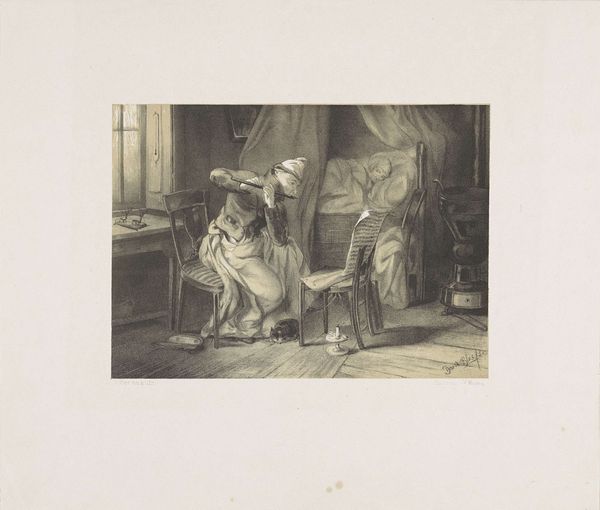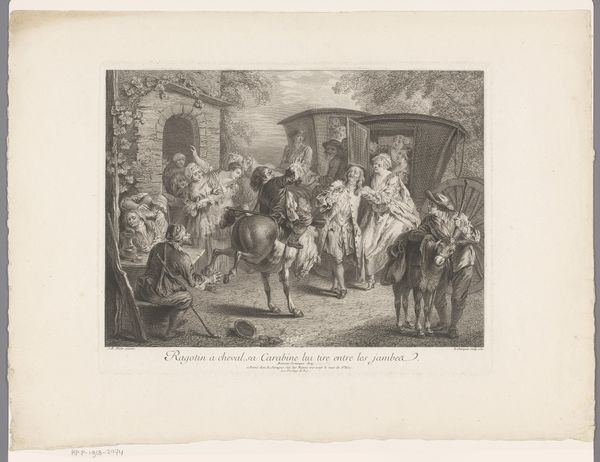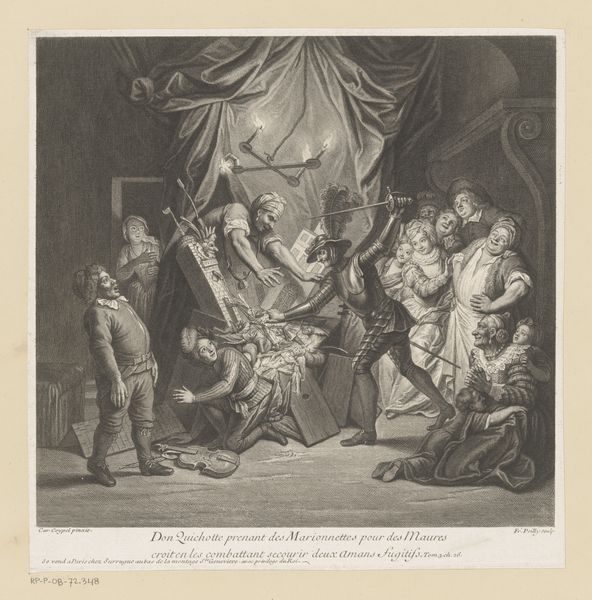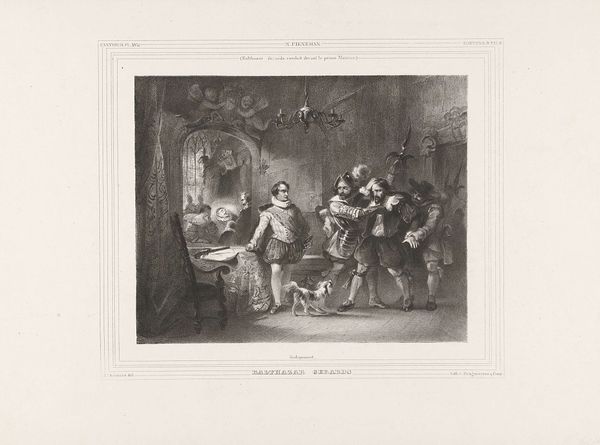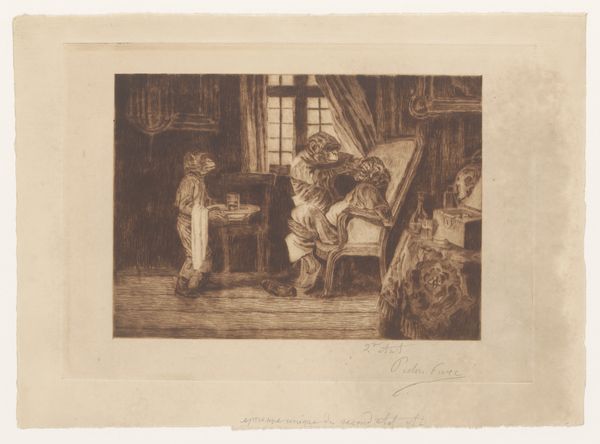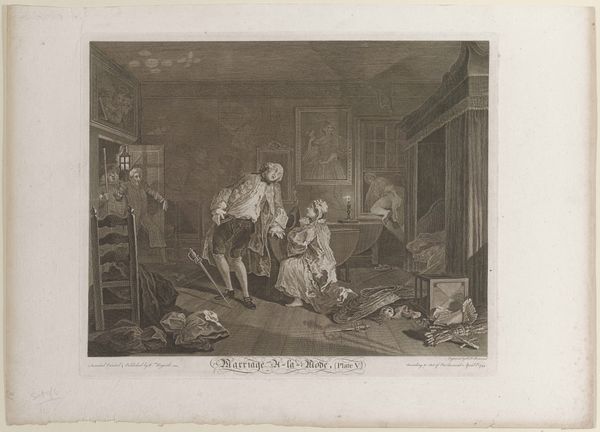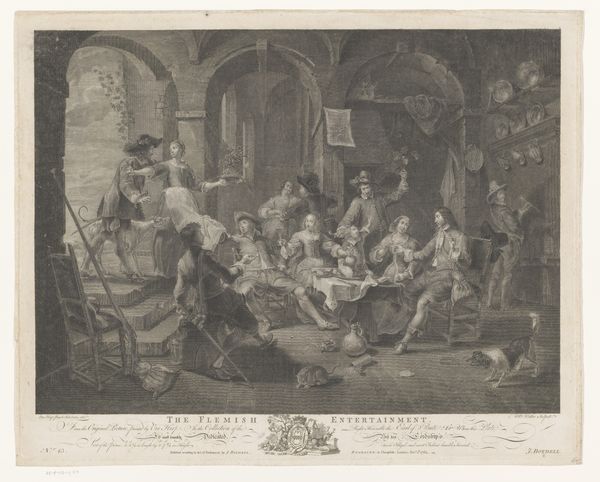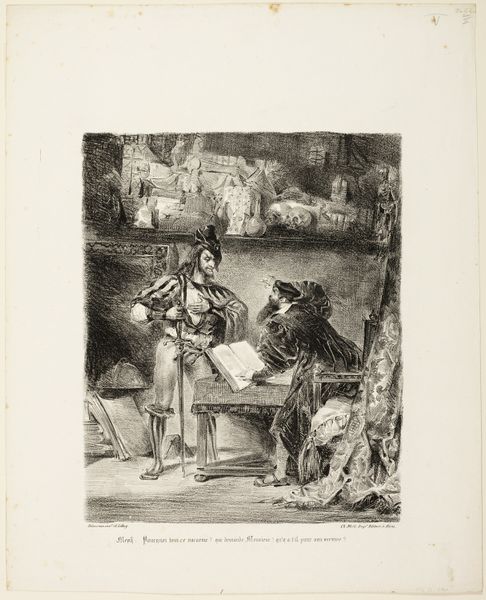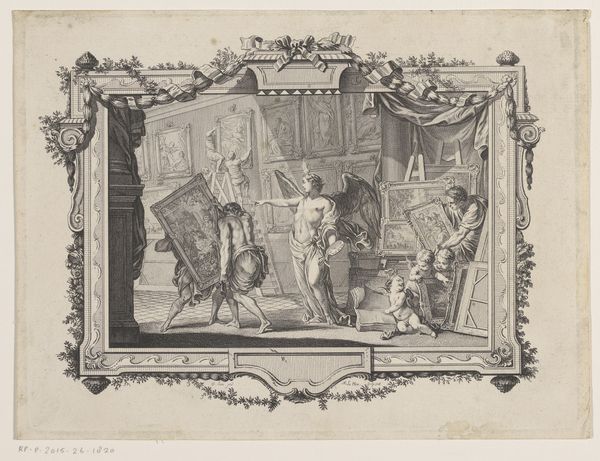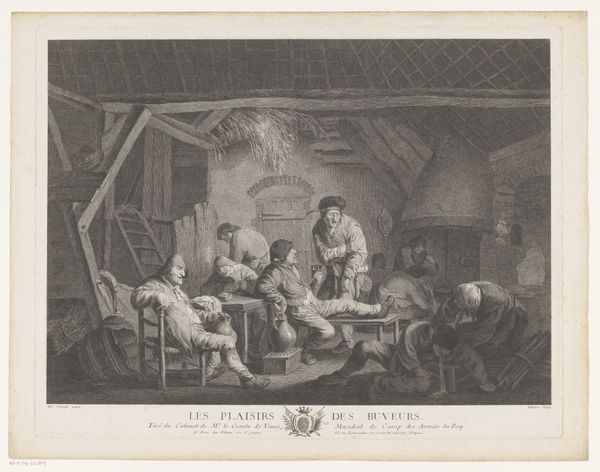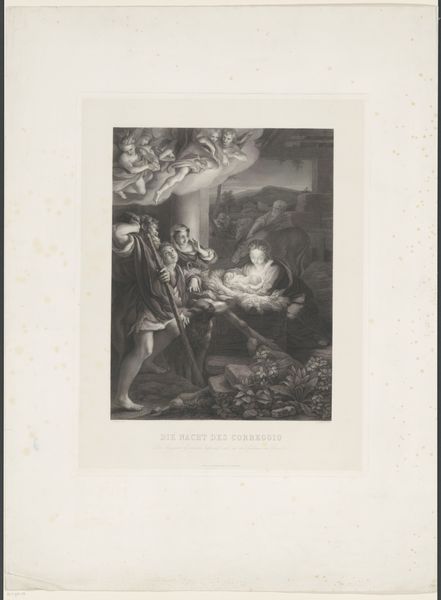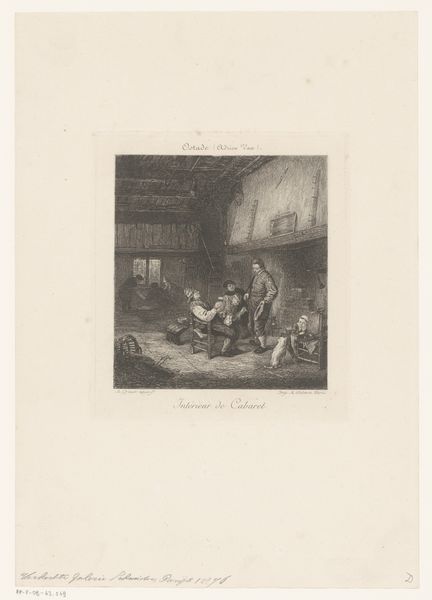
Dimensions: Plate: 13 3/8 × 15 3/8 in. (34 × 39 cm) Sheet: 13 3/4 × 15 7/8 in. (35 × 40.3 cm)
Copyright: Public Domain
Curator: What a compelling piece. This is “The Doctor Dismissing Death,” an engraving from 1785 by Peter Simon after an original design by Richard Stothard. The scene just pulses with energy, doesn’t it? Editor: Absolutely, though what strikes me first is how it encapsulates the societal anxieties of the time—this defiance of mortality in the face of so much death, particularly with nascent ideas regarding germ theory and medical advancements starting to take root. There’s a clear power struggle depicted here. Curator: Precisely! Look at how Death is framed at the window—a skeleton rendered with surprising fragility, attempting to enter, only to be repelled. The doctor’s forceful gesture, almost theatrical, isn't just a dismissal; it's an assertion of control, and one that feels very temporal. A denial in visual form. Editor: Yes, but who benefits from this 'control?' Who had access to these doctors, to the burgeoning medical knowledge of the late 18th century? There’s an undeniable class element at play; Death may be for all, but certainly, some were more prepared to keep him at bay. What are your thoughts? Curator: I agree, class anxieties play a significant role, however it would be too easy to merely flatten that into social commentary. This image carries the psychological weight of those universal questions that resurface with changing mortality rates—and that resonate differently during each turn in history. The skeleton itself takes on a certain resonance of power as a cultural trope across many generations of symbolic visual motifs. It evokes more complex concepts of fate, defiance, and the shifting views of humanity at that time, especially as enlightenment gives way to romanticism, shifting human destiny, if one will. Editor: An astute point. I concede, focusing purely on socio-economic disparities would flatten it somewhat, but can we entirely decouple it from the realities of that era? Or consider this defiance as purely individualistic? It’s impossible for me, looking at the scene of one individual standing in power as a representative of a rising social elite and a rising movement away from certain older notions of morality, not to see both represented at once, especially within genre-paintings of the day. What better reflects their sense of power? Curator: Indeed! Well, this image holds many meanings to decode. Each interpretation contributes layers to understanding not only the piece, but also the viewer's perspective across time. Editor: Agreed. A print from the late 1700s continues to speak volumes about mortality, agency, and the enduring struggles against inequality.
Comments
No comments
Be the first to comment and join the conversation on the ultimate creative platform.
